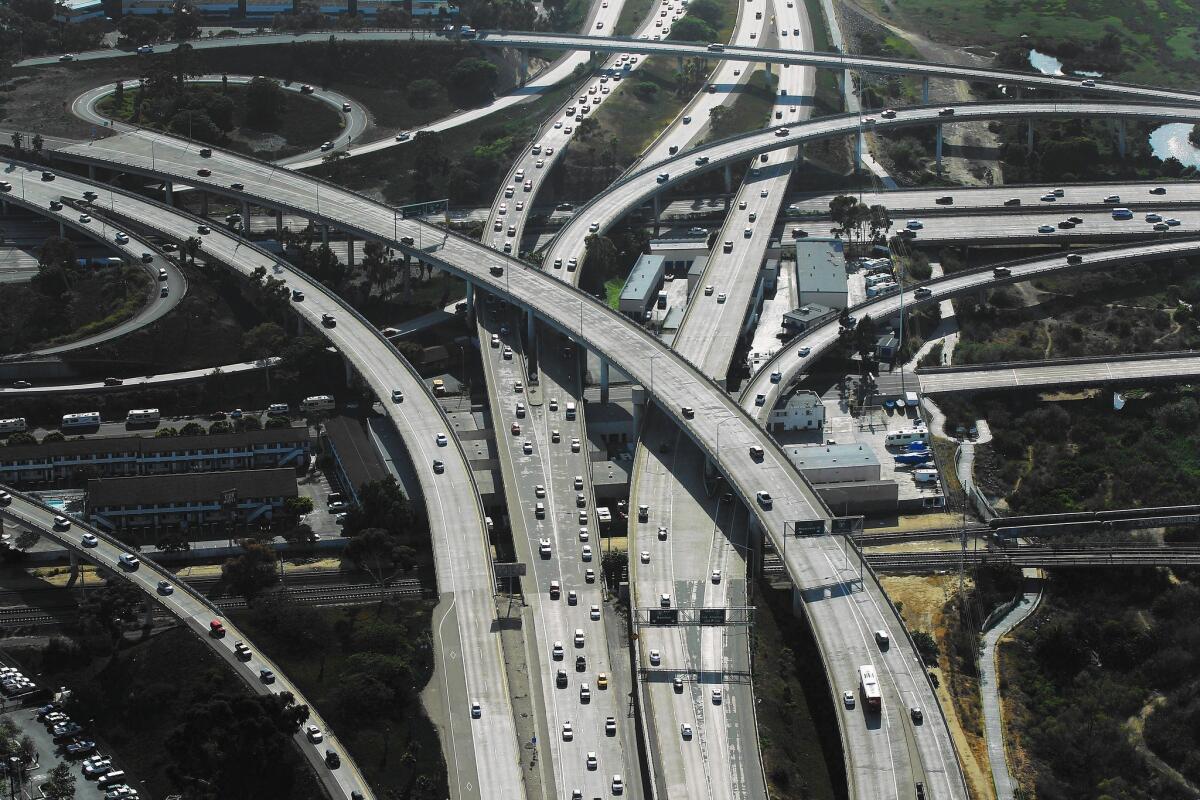San Diego adopts an ambitious, and legally binding, plan to cut emissions

SAN DIEGO — Raising the bar for municipalities across the country, San Diego has adopted one of the nation’s most ambitious plans to cut carbon emissions.
And in one aspect, the city’s document goes further than the historic climate change deal forged Sunday by world leaders gathered in Paris: It creates legally binding mandates for reducing levels of greenhouse gases.
“Today, San Diego took a landmark step toward securing a greener and more prosperous future,” Mayor Kevin Faulconer said in a statement.
The City Council on Tuesday unanimously approved the co-called Climate Action Plan, which requires annual emissions be cut in half during the next two decades based heavily on a strategy to use 100% renewable energy within that timeline.
If the city doesn’t follow through on its promise to fight climate change, environmental groups and even the state attorney general could file lawsuits to force elected officials to comply.
“We have a lot to celebrate, and when we finish the happy dance and the kumbaya, we have to accept that the hard work now begins,” City Councilwoman Marti Emerald said at the meeting. “Just passing this doesn’t suddenly make everything better.”
Several environmental advocates warned at Tuesday’s meeting that they were ready to use legal action if necessary.
“Obviously, we aren’t going anywhere. We’re just getting started,” said Nicole Capretz, executive director of the Climate Action Campaign.
“The 100% [renewable energy] goal is a mandate,” she added. “It’s not a dream. It’s not a wish or an aspiration. It’s a legal commitment.”
The plan aims to satisfy state mandates for reducing greenhouse gases that have been rolled out during the last decade, including a requirement to cut emissions by 20% below 1990 levels by 2020, 40% by 2030 and 80% by 2050.
With ratcheting pressure from leaders in Sacramento and the courts, other cities in California may face increasing pressure to adopt similarly binding climate plans. Besides San Diego, Sacramento is currently the only other city in the state with enforceable mandates on this issue.
“The majority of [climate plans] in California do not meet this standard, and therefore, in my opinion, are legally challengeable,” said Chandra Slaven, a planning consultant who worked with San Diego on its climate plan starting in 2010. “All it takes is one lawsuit and they’re in trouble.”
Earlier this year, the state Supreme Court created a significant precedent when it declined to hear an appeal by the county of San Diego, which had tried to fend off legal challenges to its own climate action plan. Under a case brought by the Sierra Club, the county will now be forced to redraft its climate plan with enforceable measures for curbing emissions.
To make sure San Diego stays on track to hit its emissions targets, yearly monitoring reports prepared by city staff in collaboration with consultants will measure the impacts of each strategy laid out in the plan.
Upcoming targets include: boosting the urban tree canopy by 15% by 2020 and 35% by 2035; recycling or composing 75% of all solid waste by 2020 and 90% by 2035; and cutting car trips in key transportation areas by 20% by 2020 and 50% by 2035.
Urban planning and environmental experts said ushering in most of these changes should be fairly straightforward, but that’s dependent on political will at City Hall. They also said the technology already exists to meet these benchmarks — and to monitor whether specific programs result in carbon reductions.
The most controversial decision could be whether to implement community choice aggregation, or CCA, a program that would take control away from the local electric utility when deciding how much renewable energy a city uses.
However, when it comes to meeting San Diego’s transportation goals, elected officials may face an even more complicated puzzle. With vehicle emissions representing more than half of the city’s greenhouse gases, the newly minted Climate Action Plan will fail if residents don’t significantly cut back on the number of miles they drive.
In October, the San Diego Regional Assn. of Governments adopted a countywide transportation plan that included millions in infrastructure spending for the city of San Diego. While some of that money went to creating bike lanes and expanding the trolley network, funding was also allocated for widening nearly every major freeway in the city.
Smith writes for the San Diego Union-Tribune.
Twitter: @jemersmith






